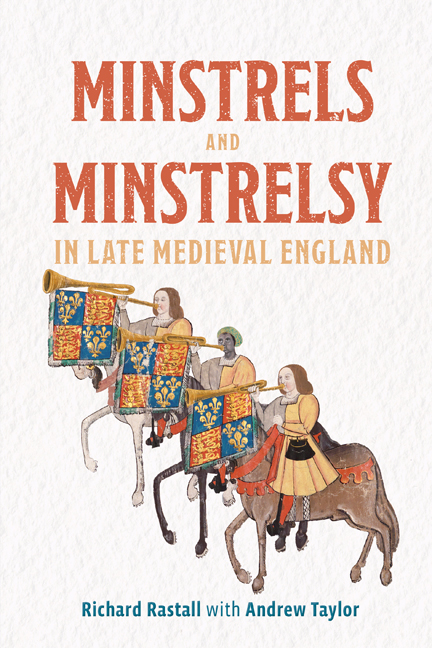Book contents
- Frontmatter
- Dedication
- Contents
- List of illustrations
- List of music examples
- List of abbreviations
- A note on references
- A note on money
- A note on dates
- Preface
- Acknowledgments
- Part I Minstrels and Minstrelsy in the Elite Households
- Part II Urban Minstrelsy
- Part III On the Road
- Part IV Minstrel Performance
- Envoi
- Bibliography
- Index
Part II - Urban Minstrelsy
Published online by Cambridge University Press: 09 January 2024
- Frontmatter
- Dedication
- Contents
- List of illustrations
- List of music examples
- List of abbreviations
- A note on references
- A note on money
- A note on dates
- Preface
- Acknowledgments
- Part I Minstrels and Minstrelsy in the Elite Households
- Part II Urban Minstrelsy
- Part III On the Road
- Part IV Minstrel Performance
- Envoi
- Bibliography
- Index
Summary
Introduction to Part II
Urban minstrelsy in England has been little studied. From the eighteenth century, writers have treated minstrelsy as a minor aspect of the history of individual towns: colourful and illustrative, but ultimately of little importance. Urban history at first relied on the researches of individual scholars, not usually professional historians, who delved into a mass of civic records and, where minstrelsy was concerned, pulled out such ‘plums’ as would be immediately interesting to the reader. This strategy was not unuseful, and in some cases did indicate a comprehensive picture of ceremonial and entertainment. Thomas Sharp's work on Coventry is especially important (and Sharp actually focused on civic drama, ceremonial and their attendant minstrelsy), and there are other examples. The serious and only recently recognised difficulty, for us, was that these historians did not explain what they had omitted from their published transcriptions. This left the reader in the dark as to the extent and precise nature of the surviving records, and additionally gave the impression that the transcriptions were complete.
This situation is largely changed by the Records of Early English Drama (REED) project, which has published the records of drama and minstrelsy in many towns, secular households and religious houses, with volumes still in preparation. For all urban entertainment two types of record are particularly important: those of the civic authorities, and those of the religious and trade guilds. These two types partly overlap, since in many places the trade guilds effectively made up the civic government; but they are also complementary, because the guilds took direct financial and practical responsibility for a large proportion of civic ceremonial and entertainment. The immediate result of the REED project, even with more material to be presented, is that we have a much fuller and more accurate view of entertainments, including minstrelsy, in the towns and villages of late medieval England. In the chapters that follow I have usually been able to refer to REED volumes, and have cited the earlier sources only where REED material is unavailable.
- Type
- Chapter
- Information
- Minstrels and Minstrelsy in Late Medieval England , pp. 127 - 128Publisher: Boydell & BrewerPrint publication year: 2023

